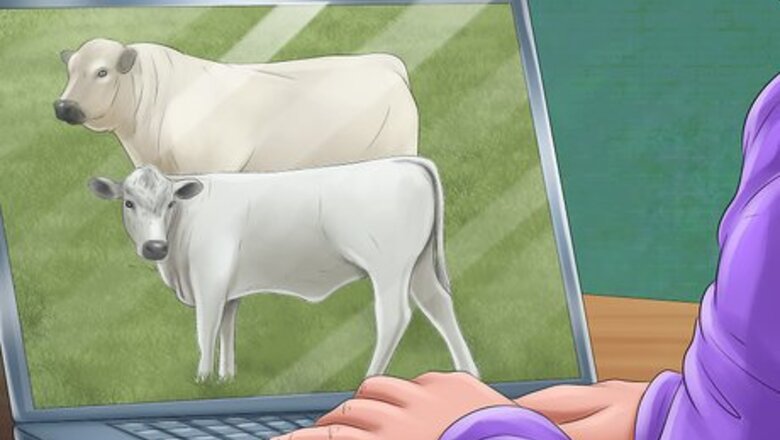
views
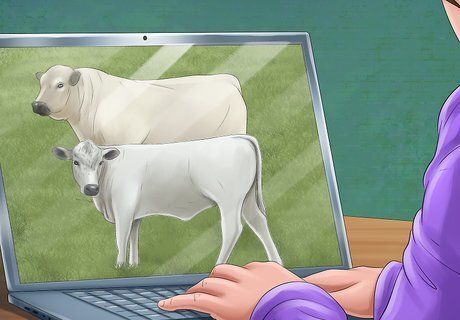
Do a search on the Internet or a cattle breeds book on "British White" and "American British White Park" cattle.
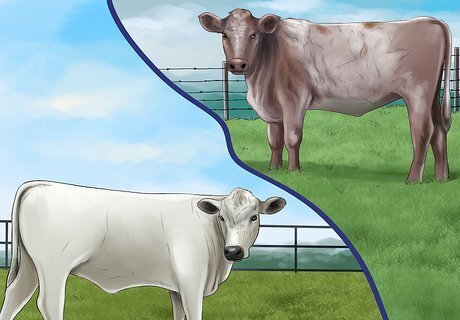
Study the characteristics of the breed. Note the following: Coloration: British White and American British White Park cattle are white with black points. Black points refer to black on the ears, around the eyes, on the nose and muzzle, on the teats/scrotum of cows/bulls, hooves, and tongue. Some animals may have dark speckling over their ribs and neck. Some British White and American British White4 Park cattle can also be red pointed, though this is more rare in this breed than the black pointed characteristics are. Body type and characteristics: British Whites and American British White Parks are moderate-sized cattle, with mature bulls weighing up to 2300 lbs and cows around 1400 lbs. They are a beef animal, but are also a heavy milking breed, making them a dual purpose-type animal. Bulls are built with the same muscling characteristics as Angus bulls are. Head characteristics: British Whites and American British White Parks are polled. They are a typical European breed like Angus, Shorthorn, Hereford, Limousin, Charolais and Simmental cattle are, with shorter-length heads and wide muzzles similar to Herefords and Shorthorns. Other characteristics: British Whites and American British White Parks are a very old breed, one of the oldest in Britain, with direct links to the ancient indigenous wild white cattle of Great Britain. This breed originated from Whalley Abbey, Lancashire, however was not officially named as such until 1946. It is considered a rare breed by the Rare Breeds Survival Trust, with only 1500 registered cattle recorded in 1990. British Whites are a maternal breed, with high survival rates, freedom from disease and great mothering ability. They are also quite docile around human handlers.
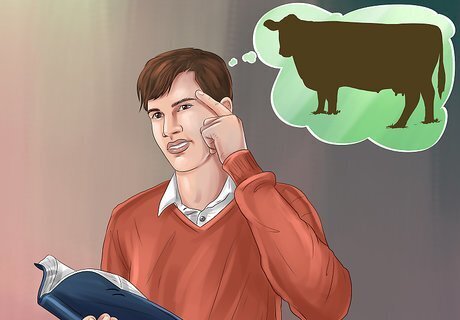
Memorize the details and characteristics of this breed.
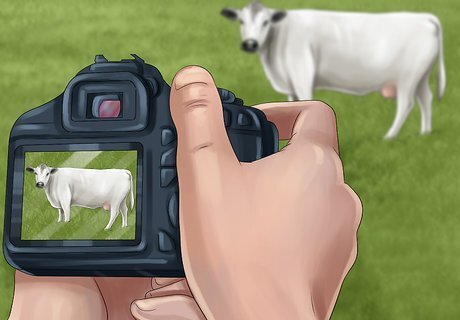
Go on a field trip or road trip and see if you can find farms and ranches with British White cattle. Take pictures of what you think are British White cattle, then compare them with pictures of British Whites and American British White Parks on the Internet and in your cattle breeds book.











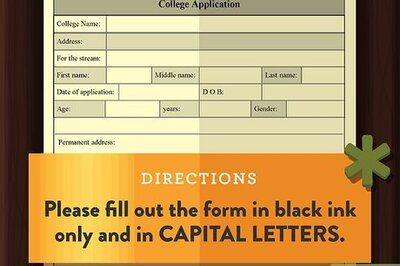
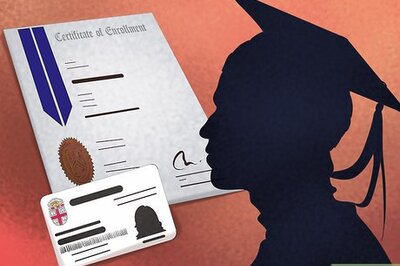

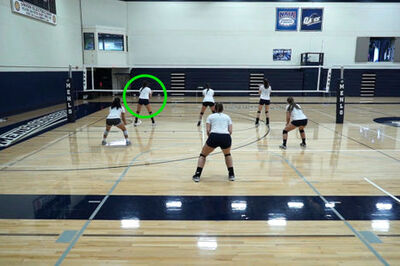



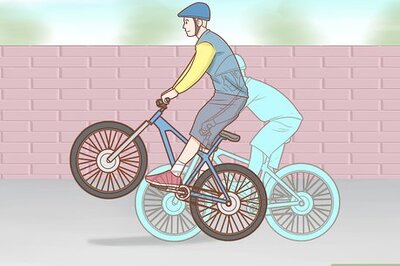

Comments
0 comment